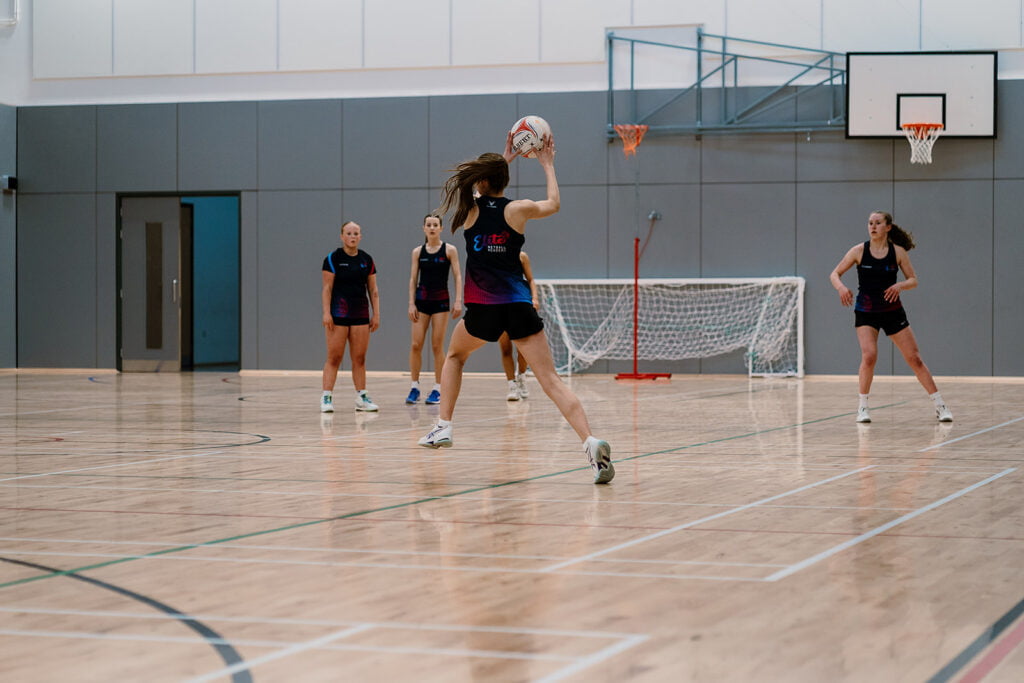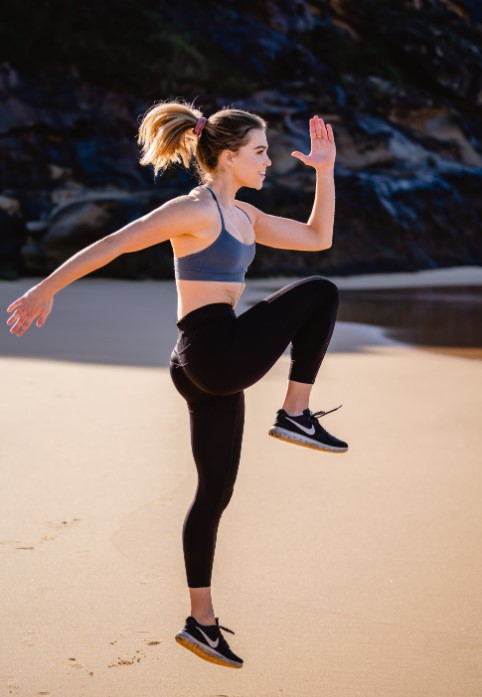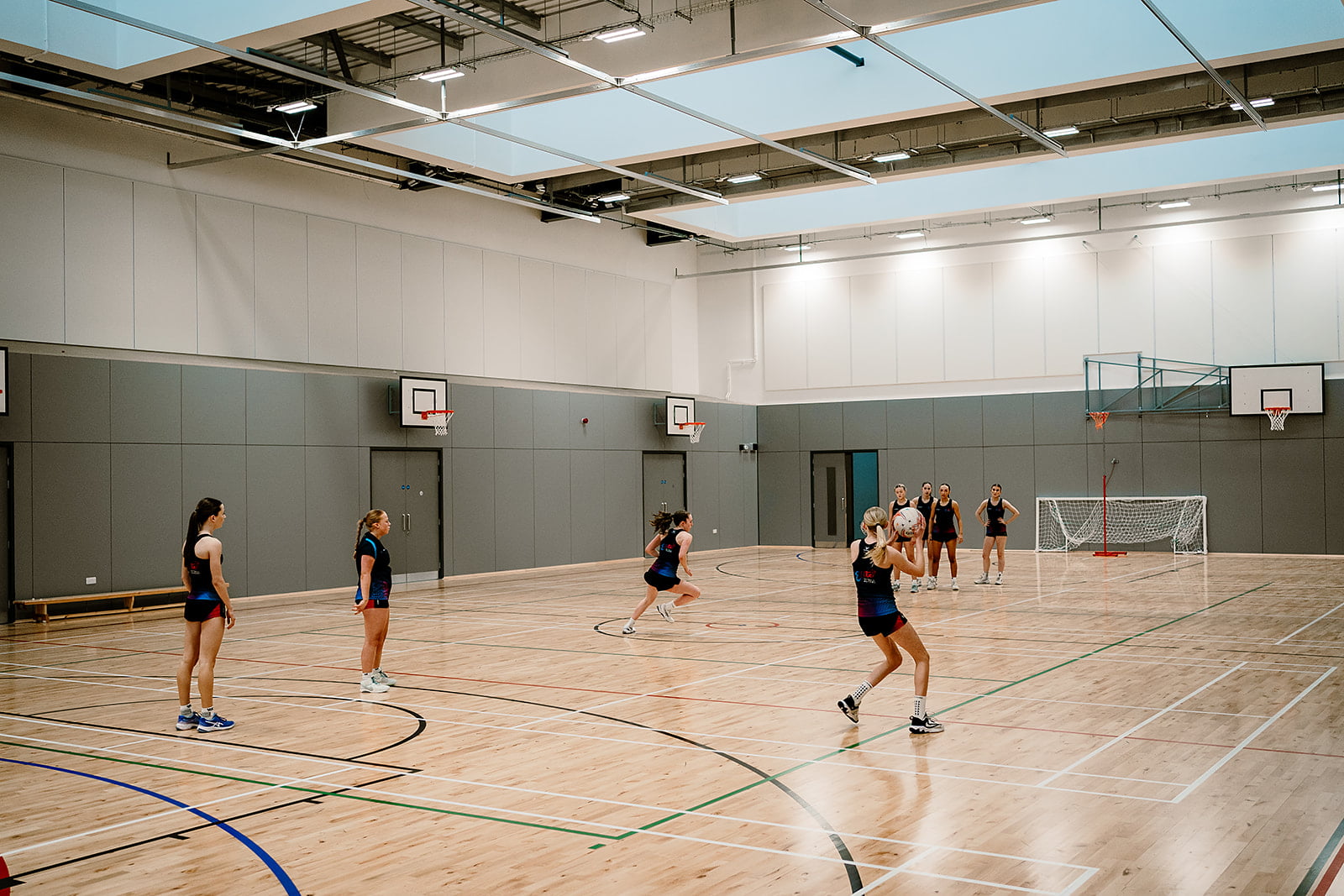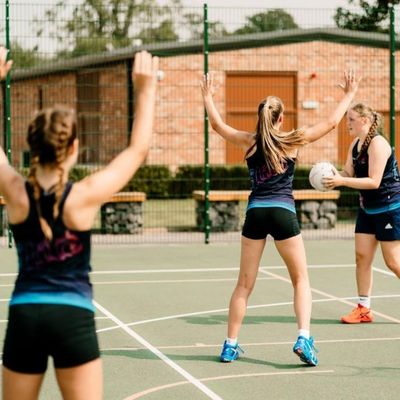Plyometrics for netballers
In this article, we look at plyometrics for netballers – what it is and why it’s important for all netballers.
Quick links and what you can expect:
- What is conditioning in netball?
- How plyometrics helps netballers
- Why you need power in netball
- Does plyometrics prevent injuries?
- How often should netballers do a plyometric workout?
- 5 x plyometric exercises netballers can do at home
- Importance of activating muscles pre-exercise
- Importance of a cooldown
What is conditioning in netball?
Netball is a dynamic sport that requires explosive movements to beat opponents and compete for the ball. Conditioning the body for these movements will help to build strength and power to perform to the best of your ability.
Conditioned netballers can make balanced landings and take the impact of running, jumping and landing on firm surfaces.
How plyometrics helps netballers
Plyometrics is the perfect type of conditioning exercise for netballers. It involves quick, explosive movements like jumping and hopping to build muscle power and speed. Plyometric exercises help netballers absorb force through the landing phases of the jumps.
Plyometric training utilises the stretch-shortening cycle (SSC) by using a lengthening movement (eccentric) which is quickly followed by a shortening movement (concentric).

Activities can be separated into fast plyometric movements and slow plyometric movements. An example of a fast plyometric movement is the pogo jump – getting off the floor quickly. While a broad jump can be defined as a slow plyometric movement with there being no restriction on the contraction of the jump.
Plyometrics enhances the ability to be powerful, which is a vital physical skill for netballers. Accelerating quickly to create or enter space, closing down an opponent, and changing direction.
Why you need power in netball
You need power in netball for jumping to block shots like Shamera Sterling-Humphrey or for sprinting to reach a loose ball and escape opponents. Upper body power is important too for strong and accurate passes and shooting.
5 Performance benefits of plyometrics for netballers:
- Power – Plyometrics develop the ability to produce force quickly, which can transfer to jumping high and being fast off the floor to push in your intended direction.
- Speed – Plyometrics enhance the ability to move quickly and explosively.
- Agility – Plyometrics improve the ability to accelerate, decelerate, and reaccelerate effectively in a new direction.
- Movement Competency – Plyometrics teach how to jump and land safely, positioning the body to be as powerful as possible while preventing injury from high forces.
- Balance – Jumping and landing unilaterally or changing direction quickly requires maintaining balance and stability. Plyometric training enhances the proprioceptive system (the body’s ability to sense its position in space), crucial for maintaining control during dynamic movements.

Does plyometrics prevent injuries?
Plyometrics provides benefits from an injury prevention perspective, enhancing joint and tendon strength to withstand larger forces and stresses during exercise.
Increasing evidence suggests that plyometric exercises may help prevent non-contact ACL injuries by improving the ability to land safely and distributing forces more effectively across the body. A proper plyometric training program can increase neuromuscular control in all three planes, reducing stress on the ACL and transferring it to the muscles, tendons, and bones. This improved force distribution results in less force applied directly to the knee.
Current Concepts of Plyometric Exercises (Davies et al., 2015). Hewett et al. (1996)
How often should netballers do a plyometric workout?
Netballers should seek to do a plyometrics workout 2 – 3 times a week.
As in many situations, this frequency depends on other training commitments during the week. It’s advised to have at least one day of rest between plyometric sessions. Plyometrics can be combined with strength sessions, as they complement strength-based exercises well. Typically, 2 – 4 plyometric exercises are included per session and should be performed closer to the start of the session as they are high-intensity, fatiguing exercises.
Plyometrics is defined as a high-intensity exercise and can put significant stress on joints, tendons, and muscles if done excessively. As with all new exercises, volume should be increased progressively to reduce the risk of injury or overtraining.
Volumes are monitored slightly differently from other gym-based exercises. The number of foot contacts (the number of times the feet land from a jump) is tracked for plyometrics.
On average, a netball player makes around 1,000-to-1,500-foot contacts per 60-minute game. (This varies by position and style of play.)
Consideration should be given to the volume of training and matches when adding plyometrics to programs, and it’s important to note that some form of plyometrics is already being completed during training and games through jumping and landing.

50-foot contacts during a training session are considered low volume, while 200+ would be considered high volume, depending on the intensity of the exercise.
High-intensity exercises such as drop jumps and bounding require less volume, whereas low-intensity plyometrics such as pogo jumps and skipping can be done at high volume as there is less impact on the body.
Pre-season is a great time to focus on plyometrics alongside technical training from a movement competency perspective. Learning how to jump and land safely in different directions, developing physical qualities such as power and speed, and building robustness so the body is prepared for the demands of the large amounts of jumping, landing, and turning required over a season.
5 exercises netballers can do at home
1. Countermovement Jump
This power exercise involves jumping as high as possible following a quick bend and extension of the lower body. It effectively transfers to on-court skills like jumping to reach or block.
No equipment is needed. Stand with your feet hip-width apart, bend your knees and push down to generate power to jump vertically, as high as you can. Reach upwards with your arms. Land in the squat position and repeat as many times as you can in 30 seconds.
2. Double leg / single leg hurdle
This exercise is excellent for producing horizontal unilateral and bilateral power. It helps develop acceleration (the ability to get off the mark quickly) and teaches effective landing and deceleration, which is crucial for stopping safely on the court.
Line up the hurdles, and jump over them one by one using your arms to propel you forward. Landing evenly if doing double leg jumps and balanced if doing single leg hurdles. Move through the hurdles quickly to get the most out of this plyometric exercise.
Go through lines of hurdles and walk back to the beginning, repeat 3 times in a row before resting.
Top tip – if you don’t have any hurdles, use jumpers or water bottles (lying on their side) as obstacles.
3. Pogos to land in different positions
This exercise enhances the ability to be quick off the floor and improves reactivity. It involves dorsiflexion and plantarflexion, landing on the midfoot to create elasticity and ankle stiffness, which transfers to stable landings in various positions.
No equipment is needed. Standing on one foot, simply pogo/hop in different directions. Every time you land on a single foot, try to land balanced and hold before pushing off again. Repeat on both feet.
Try 30 seconds, on either side. As you get stronger, increase the number of repetitions.
Want more plyometric exercises for netballers?
Grab the final two exercises below:
importance of activating muscles pre-exercise
Plyometrics are intense exercises that can put significant stress on the body. Make sure your muscles have warmed up before trying them.
An effective warm-up helps reduce muscle soreness after completing these exercises. Follow the RAMP protocol:
- Raise heart rate
- Activate muscles
- Mobilise joints
- Potentiate the body
(Potentiate means to increase the effectiveness of something, so in this instance, we’re ensuring the body is ready to help us tackle plyometric exercises)
Activations should focus on the lower body, including the hip, knee, and ankle regions. Activating stretches, calf raises and glute activation exercises are good to do before a plyometric workout. Low-level plyometrics can be incorporated at the end of the warm-up as a great way to focus on movement competency and stability/balance while having fun.

Low-level plyometrics could be gently going through a jump obstacle course, jumping and balancing on an object, or engaging in jump-based games – either way, get the body moving, warm it up and have some fun.
Importance of a cooldown
Cooling down and recovering after a plyometric session is important due to the high intensity and strain on the body during the exercises. Appropriately cooling down helps reduce muscle soreness, shortens recovery time before your next session, reduces the risk of injury, and can improve flexibility and mobility through stretching.
If you are unsure about any of the exercises discussed today, ask a coach or instructor before performing and prioritise movement first over intensity to ensure you are doing the movement correctly before making the drill more intense or moving to more complex plyometrics.








